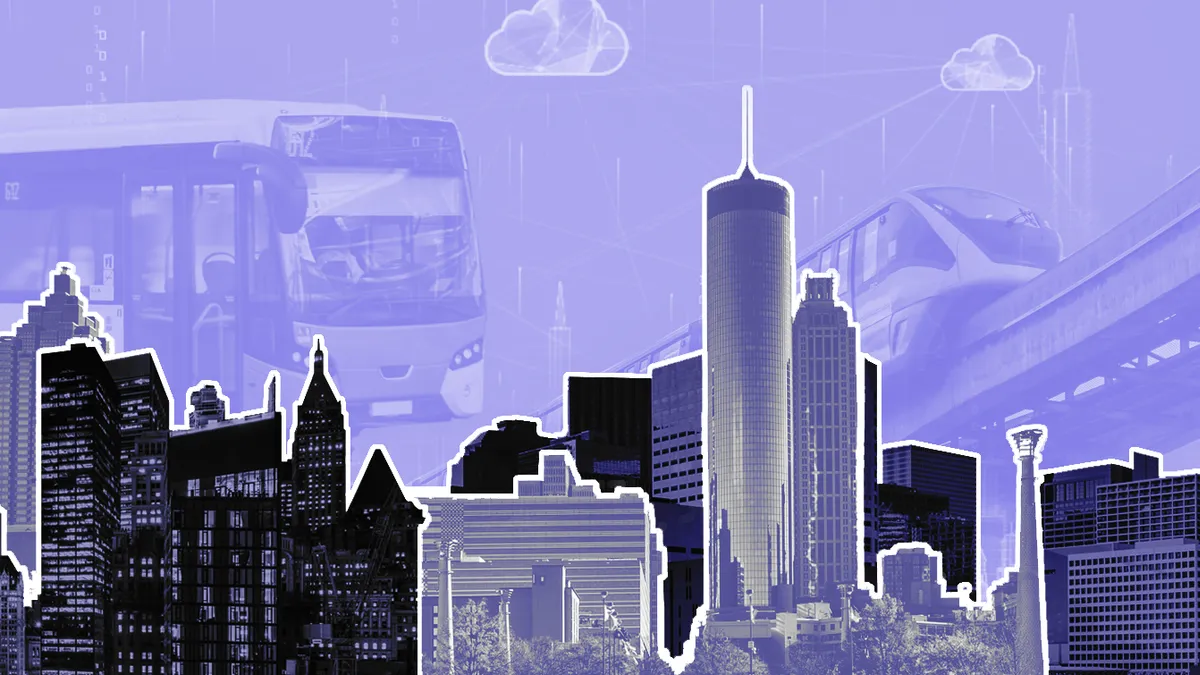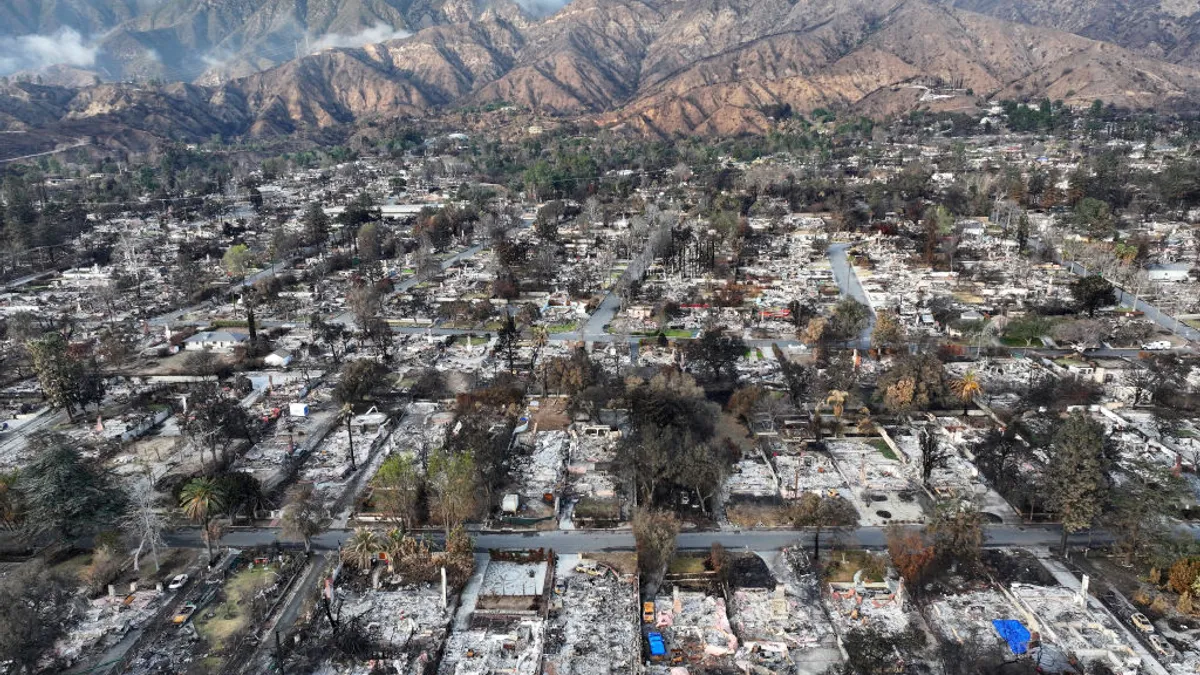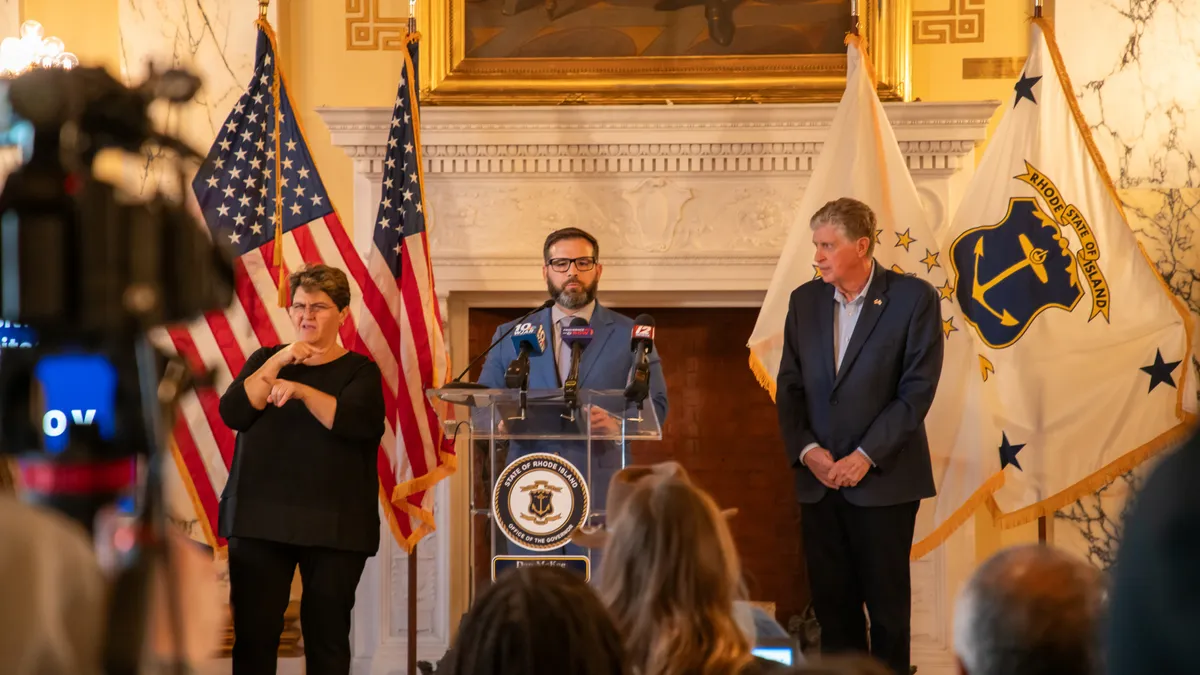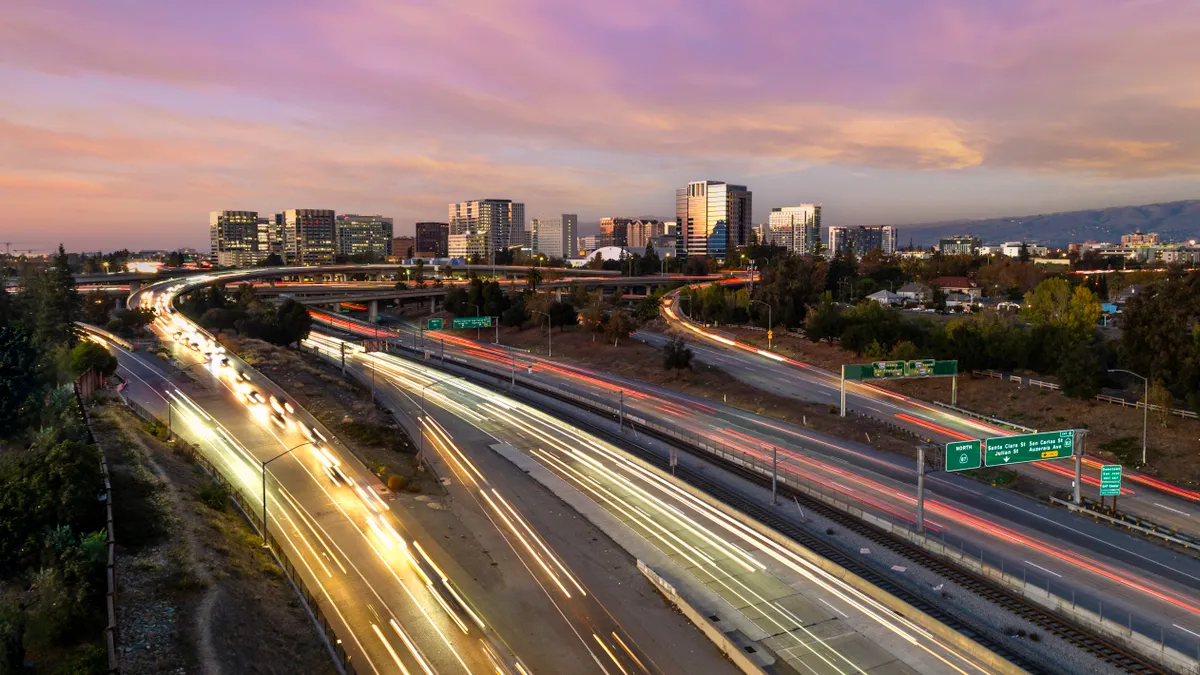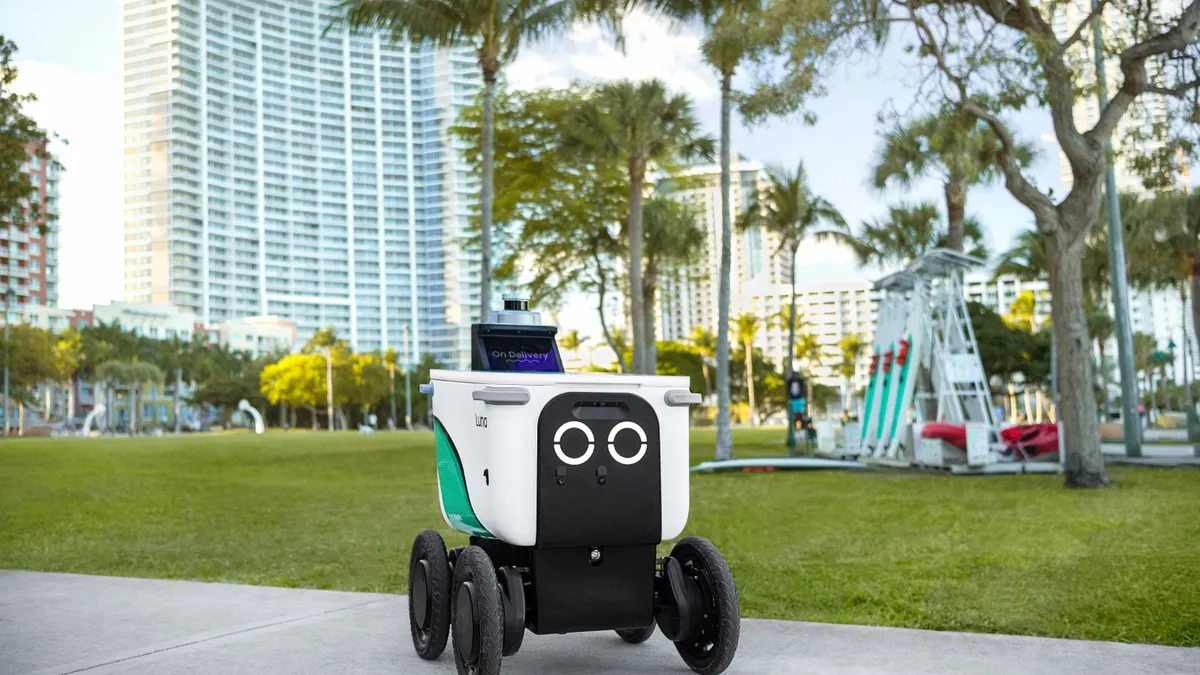Editor's note: This story is part of Smart Cities Dive's "Reassessing the smart cities movement" multipart series, which provides a look into the past, present and future of the space.
Over the years, the "smart city" concept has spurred local governments to consider the newest technologies that companies promised would help eliminate the hassles of urban life and make cities safer, greener and more efficient. Local leaders wanted to harness the potential of app-based solutions and internet of things connectivity, where sensors provide masses of data they could use for better decision-making and greater adaptability.
Technology did not always advance at the speed promised, though. Meanwhile, new inequities have surfaced and a pandemic upended cities’ priorities and drove a massive shift in how they interact with their residents.
Due to those changes in the urban landscape, Smart Cities Dive decided to reassess the smart cities movement. We wanted to find out what being a smart city means today and how cities are implementing smart-city initiatives throughout the country.
We reached out to the largest cities of the 25 largest U.S. metro areas and asked them several questions: We asked what a smart city is today and how that definition has changed over the past five years. We wanted to know what cities have done recently to become smarter and what plans they have for the near future. We also asked what limitations and weaknesses they found in the smart city movement and specifically how they've changed their approach to address inequality.
We received responses from 15 of the 25 cities: New York City; Los Angeles; Dallas; Houston; Washington, D.C.; Philadelphia; Boston; Phoenix; San Francisco; Detroit; Tampa, Florida; Denver; Orlando, Florida; San Antonio; and Portland, Oregon.
The responses we received formed the basis of a multipart series that begins with this article, on how cities are rethinking the definition of a smart city. Over the next few weeks, the series will explore how the smart city landscape has changed over the past five years, how cities are preparing for and anticipating the next five years, how some cities are gearing up for even more futuristic endeavors and how cities are trying to ensure equity remains at the forefront.
What is a smart city?
While the responses did not provide a single definition of a smart city, they suggest that cities consider themselves smart based on goals they set and how they achieve those goals. In general, these respondents say the goal of smart cities is to improve residents’ quality of life. Local leaders say they achieve that goal by using technology and data responsibly as tools for decision-making and experimentation.
Let’s start with the technology. At its most basic level, "a smart city uses data, connectivity, and forward-looking technology to solve citizens’ problems," said Brandon Campbell, smart mobility manager for Tampa, Florida.
Pointing to the description the tech industry and vendor use, San Francisco officials say smart cities are those that have put in place "modern wireless communication and devices that can provide telemetry about all types of conditions and actions in the environment," said Linda Gerull, the city’s chief information officer and executive director of the city and county’s technology department.
"The definition further extends to integrated business applications and data analytics that can inform policy and services to residents," Gerull added.
In San Antonio, a smart city is one that simply leverages "data, technology and services to empower people," said Brian Dillard, the city’s chief innovation officer.
And to officials in Detroit, a smart city is one that leverages technology in multiple ways "to improve efficiency and help deliver better service to its residents," said Art Thompson, its chief information officer.
Phoenix Mayor Kate Gallego said a smart city is data-driven, technologically focused and well designed. It "designs and implements solutions for efficient use of time, resources, and energy — improving city processes and quality of life for residents," said Gallego.
It’s a city that uses "edge technology, and data, especially real-time data, to improve the urban experience for its residents," said David Edinger, Denver’s chief information officer.
Others emphasized that the technology is a means to an end, not the end itself.
A smart city meets the needs of its people, said John Paul Farmer, chief technology officer of New York City. Generally, that requires public engagement, user research, experimentation, planning and technology that provides the infrastructure, products and services that help residents thrive, he said.
"Smart cities aren’t just about deploying sensors and creating data dashboards," said Farmer. "Being smart means addressing issues that affect residents in a way that is user-centered and preserves people’s digital rights."
In Dallas, a smart city is one that focuses on improving the quality of life of all its citizens by “adopting new forms of governance, public participation, process improvements, technology adoption, data-driven decision making and providing sustainable services,” said Amanda Nabours, the city’s IT architect.
Similarly, Jesse Bounds, director of the Houston Mayor’s Office of Innovation & Performance, said a smart city "leverages data and advanced technologies to improve the quality of life for citizens by sharing information with the public, driving economic growth and building a more inclusive society."
Los Angeles Deputy Mayor of Budget and Innovation Jeanne Holm said a smart city is a city "that provides services and uses data and technology in ways that improve equity, access, safety, and quality of life for residents, businesses and visitors."
Portland, Oregon, goes further in specifying what smart cities do. It defines a smart city as one that uses data and technology to improve the lives of, and prevent further harm to, underrepresented communities including Black, indigenous, people of color and disabled communities, said Kevin Martin, manager of Smart City PDX.
It also promotes digital justice, which "ensures that people have the digital rights and resources they need to thrive — including access to digital infrastructure, shared ownership of digital resources, data protection, and open and accountable digital governance," Martin said.
Some cities have not embraced the "smart cities" term at all and say it does not accurately describe their efforts.
Orlando instead describes itself as "future-ready," according to Michael Hess, director of the Future-Ready City initiative. The city tries to "always look to the future and leverage innovation and collaboration to enhance our services and investments," Hess said.
In Boston, the Mayor’s Office of New Urban Mechanics rarely uses the term "smart city" since it "doesn’t represent the complexity of the rich social, intellectual and cultural dynamics that residents hold dear as we work to improve where we live,” nor does it provide a meaningful description of the city’s work, said Kris Carter, the office’s co-chair.
"What makes a city smart? It’s certainly not the amount of technology that can be deployed and the data that can be collected and analyzed," said Carter. "It is rather the recognition of the strengths community members possess and how to lift them up, how to build partnerships, how to learn together, and how to be accepting of failure as part of that learning process."
A smart city may leverage technology to answer questions and move community-enabled plans forward, he said. But a smart city never starts with the technology or a preconceived notion of the solution before having conversations and building collaborative relationships.
Some city leaders also say their definition of a smart city has evolved or is still evolving.
Traditionally, smart city technology leverages intelligent city infrastructure, including connected devices, sensors and data analytics to address challenges, said the District of Columbia’s Office of the Chief Technology Officer in a statement.
The role of smart cities is to provide the framework that helps the government and its partners to "responsibly deploy" connected devices and various sensor and data-driven technologies in "a coordinated and consistent manner," said the district office.
"At a people level, a smart city seeks to transform how government operates by putting the needs of residents and users first and using the best tools and resources it can leverage to solve real challenges," the office stated.
However, the district's government changed its definition of what it means to be a smart city several years ago, the office stated. It became less technology-focused and more about how to train and prepare its employees, residents and businesses for the digital age.
Back in 2019, Philadelphia, in its SmartCityPHL Roadmap, defined a smart city as "a city that uses integrated information and communication technology to support the economic, social and environmental goals of the community."
"In other words, the goal is to use technology and data to improve governmental efficiencies and service delivery, as well as improve the quality of life for all residents," said Emily Yates, Philadelphia’s smart city director.
But the definition of a smart city is "constantly changing," according to Yates. The concept of a smart city is becoming more human-centered with a key focus on equity, she said.
Cailin Crowe contributed reporting to this story.



